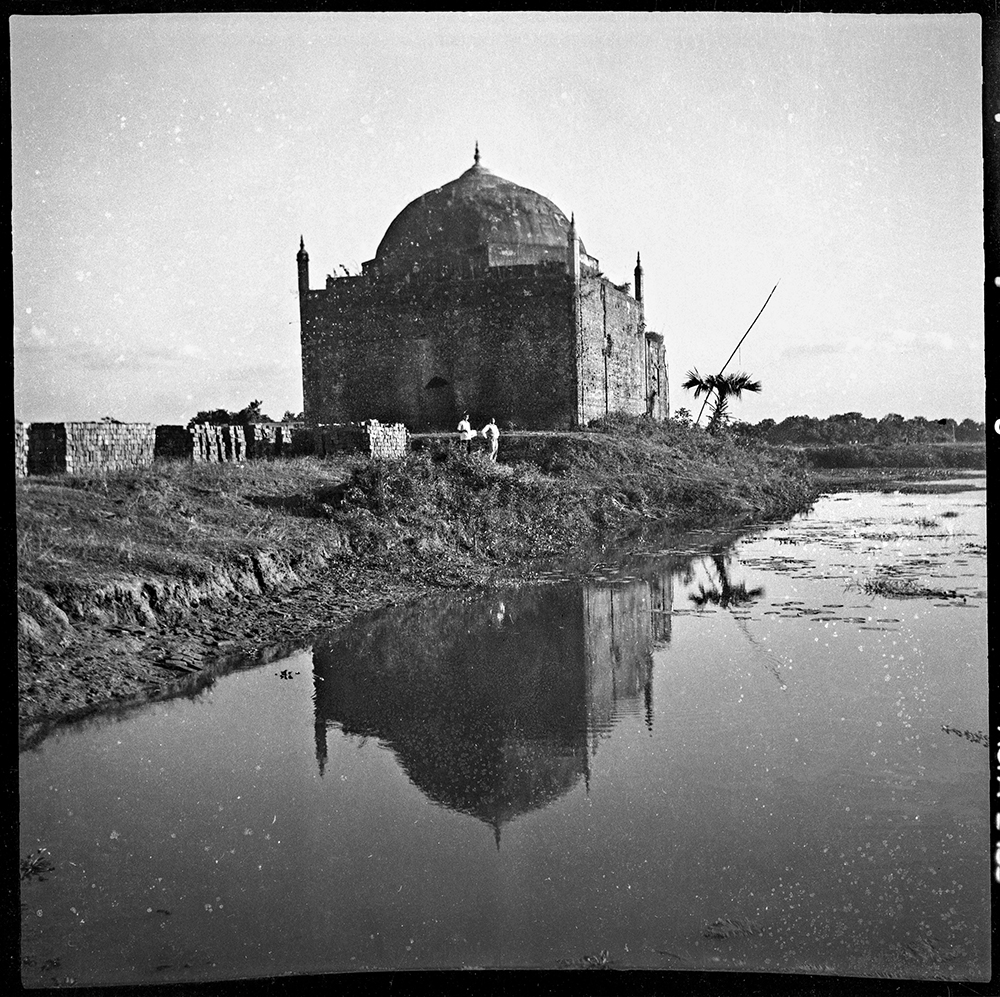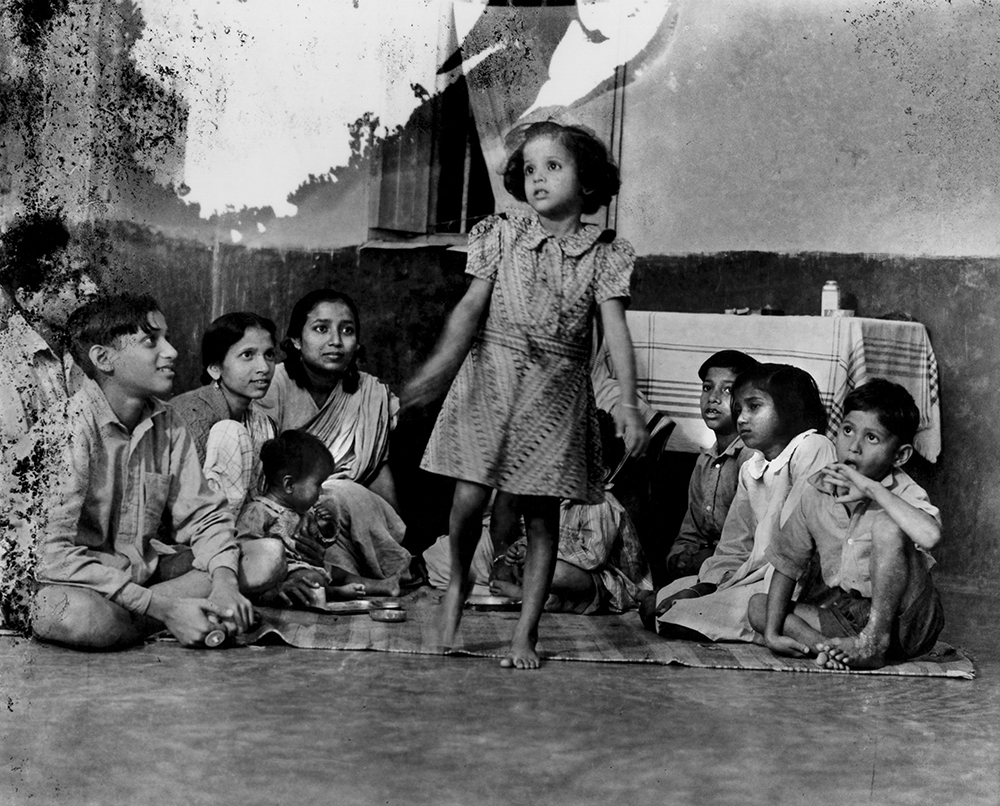One of the most arresting images in Drik’s exhibition of works from the archive of legendary Bangladeshi photographer Golam Kasem, known as Daddy, was a black-and-white shot from 1922 in which a woman is seen from behind, thigh-deep in water and wrangling a fishing net as a boat bobs in the background. Printed from a fractured glass negative and spiderwebbed with cracks, the image suggests desiccated earth or dehydrated winter skin, an effect at odds with the subject matter.
Kasem, who died in 1998 at age 104, is considered the father of Bangladeshi photography. Born in 1894, in what was then the British Raj, he took up photography as a teenager, buying his first box camera in 1912. Though Kasem was a lifelong amateur, the exhibition text notes that he was in his nineties when he sold his first photograph, he was instrumental in the formation of Bangladesh’s photography scene. In a typewritten statement from 1990, placed in a vitrine of archival ephemera at the center of the exhibition, Kasem recounts being rebuffed repeatedly by the professional photographers from whom he sought advice early in his career. Determined to share his hard-won skills, Kasem devoted his life, as he wrote, to “imparting knowledge of photography to others.” He set up the country’s first photography organization, the Camera Recreation Club, in 1962. His scholarly achievements (such as publishing the first anthology of Bangladeshi photography in 1964), decades of mentorship, and collective approach to photography that emphasized both education and access earned him the nickname “Daddy,” which is now treated as a de facto surname.



Source: Rahel Aima


